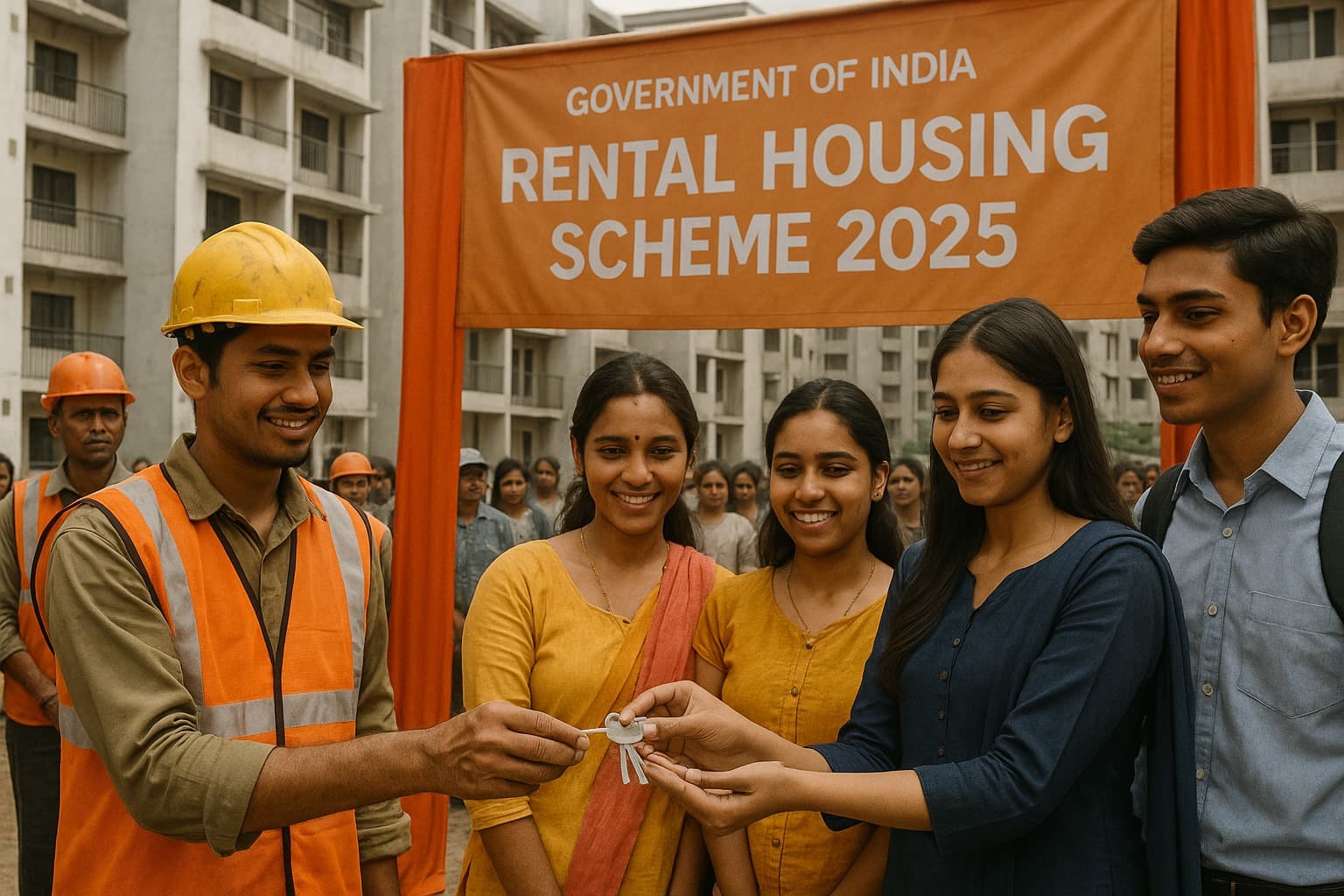Affordable Rental Housing: Meeting India's Urban Housing Needs
Summary
Affordable rental housing is crucial for meeting India's urban needs, driven by migration and rising property costs. Government initiatives and private developers are addressing demand, fostering inclusive urban growth.

India’s urban housing market is evolving rapidly. With growing migration to cities, rising property prices, and changing work patterns, the demand for rental housing India has reached unprecedented levels. The rise of affordable rentals is not just a temporary trend—it’s becoming a cornerstone of urban housing solutions. From government-led initiatives to private developers’ innovative projects, housing projects India are increasingly designed to meet the needs of students, migrant workers, young professionals, and families seeking budget-friendly yet quality homes.
Why Affordable Rental Housing Matters
The urban housing crunch in India is no secret. Metro cities like Mumbai, Bengaluru, Pune, Delhi, and Hyderabad face constant pressure from population inflows. Traditional homeownership is increasingly unaffordable for first-time buyers and young professionals, giving rise to the need for rental schemes India. Affordable rental housing provides several benefits:
Access for Migrants and Students: Cities attract students, young professionals, and migrant workers who cannot immediately invest in buying property. Affordable rentals offer flexibility, lower financial burden, and proximity to workplaces and institutions.
Bridging the Demand-Supply Gap: While housing demand continues to rise, supply of affordable homes lags behind. Rental housing projects help fill this gap, offering a practical solution to urban dwellers who cannot afford ownership yet.
Boosting Real Estate Growth: Developers and investors recognize the potential in affordable rentals. A well-planned rental project ensures steady rental yields and long-term occupancy, making it a viable business model alongside traditional property sales.
Government Initiatives Supporting Rental Housing
India’s government has acknowledged the importance of rental housing and launched several affordable rental housing projects in India 2025 under schemes like the Pradhan Mantri Awas Yojana – Rental Housing Component. Key highlights include:
Focus on urban migrants and low-income workers, providing quality homes at reasonable rent.
Promotion of Public-Private Partnerships (PPP), encouraging real estate developers to participate in the rental housing sector.
Incentives for developers, including reduced GST rates, faster approvals, and financial support to ensure project viability.
These initiatives reflect a strong policy push towards government rental housing schemes India, emphasizing inclusivity, affordability, and accessibility for urban populations.
Rising Demand for Affordable Rentals

The demand for rental housing demand among migrants and students has grown exponentially. Several factors contribute to this trend:
Urban Migration: Cities offer better employment opportunities, education, and lifestyle options. Migrants from smaller towns often prefer rentals due to short-term stay requirements and financial limitations.
Education Hubs: Cities like Pune, Bengaluru, and Hyderabad are home to numerous universities and colleges. Students and young professionals drive the rental market, seeking homes close to campuses or IT hubs.
Work-from-Office Dynamics: With companies returning to hybrid or office-based work, professionals increasingly seek rentals near business districts, IT parks, and industrial zones.
Affordability Over Ownership: Property prices in metros continue to rise, making homeownership challenging. Affordable rental housing offers an alternative that ensures comfort and convenience without financial strain.
Private Developers Driving the Rental Housing Sector
Real estate developers are responding to the rising demand by focusing on affordable rental housing opportunities India. Projects are designed with tenant-centric amenities, flexible lease terms, and modern facilities. Some notable trends include:
Compact and Efficient Apartments: Developers are creating smaller, well-designed apartments to maximize affordability while ensuring functionality.
Co-Living Spaces: Especially popular among students and young professionals, co-living models provide shared amenities, security, and community living at lower costs.
Integrated Townships: Developers integrate residential, retail, and recreational spaces to create holistic communities, making rentals more attractive to tenants.
Tier-2 City Focus: As metro cities saturate, developers are exploring Tier-2 cities like Indore, Coimbatore, and Jaipur, offering affordable rental homes to meet growing demand.
Impact on Urban Real Estate
Affordable rental housing has a ripple effect on the broader Indian real estate market:
Stabilizing Rental Yields: High occupancy in rental projects ensures stable income for developers and investors. This creates confidence in the rental sector as a sustainable real estate investment.
Urban Planning and Development: Concentrated rental housing promotes planned urban growth, reducing unregulated settlements and slum proliferation.
Workforce Mobility: Affordable rentals near employment hubs increase workforce mobility, allowing cities to attract talent without straining long-term homeownership markets.
Encouraging Inclusivity: Rental housing ensures that even low-income workers can access decent housing, supporting social equity and inclusive urban development.
Challenges in Affordable Rental Housing
Despite the growth opportunities, affordable rental housing projects driving Indian real estate face challenges:
Land Availability: Securing land in urban areas at affordable costs is difficult, which can affect project feasibility.
Regulatory Hurdles: While government policies are supportive, approval processes and compliance requirements can slow project execution.

Tenant Management: Unlike owned properties, rental housing requires constant tenant management, maintenance, and legal compliance.
Investment Perception: Some investors still perceive rentals as less profitable compared to property sales, limiting developer participation.
Addressing these challenges through streamlined policies, innovative financing models, and tenant-friendly management can accelerate the sector’s growth.
The Road Ahead
The future of housing solutions for migrant workers and students in India is promising. Affordable rental housing is poised to become a mainstream segment of India’s real estate landscape. Key trends shaping the next few years include:
Digital Platforms for Rentals: Proptech solutions connecting tenants and landlords make rental transactions transparent and efficient.
Sustainable and Smart Rentals: Developers are integrating energy-efficient designs and smart home features into rental projects.
Hybrid Models: Combining co-living, short-term rentals, and long-term rental options to cater to diverse tenant needs.
Expansion Beyond Metros: Tier-2 and Tier-3 cities will emerge as critical markets for affordable rentals due to lower property costs and growing job hubs.
The alignment of government initiatives, private developer focus, and tenant demand ensures a strong growth trajectory for affordable rental housing in India through 2025 and beyond.
Conclusion
Affordable rental housing is no longer a niche segment; it is a crucial pillar of India’s urban housing ecosystem. With rising migration, student inflows, and changing work patterns, rental housing India is becoming an essential solution. Government-backed rental schemes India, combined with private developers’ innovation, are creating a balanced supply that addresses affordability, quality, and accessibility. The sector not only provides homes for students, migrants, and professionals but also stabilizes rental yields, encourages urban planning, and supports inclusive growth. Affordable rental housing projects are shaping the future of Indian cities, making property accessible while fueling housing demand India 2025.
Summary (100 Words)
Affordable rental housing in India is emerging as a vital solution to urban housing challenges. Driven by migration, student inflows, and rising property prices, affordable rentals provide flexible, cost-effective living options. Government-backed schemes like the Pradhan Mantri Awas Yojana – Rental Housing Component and private developers’ projects are meeting this growing demand. Rental housing supports workforce mobility, ensures social inclusivity, and stabilizes property markets. Co-living spaces, compact apartments, and integrated townships are the trends shaping this sector. As India’s urban population grows, affordable rental housing will remain a key driver of real estate development, investment opportunities, and urban planning in 2025 and beyond.
